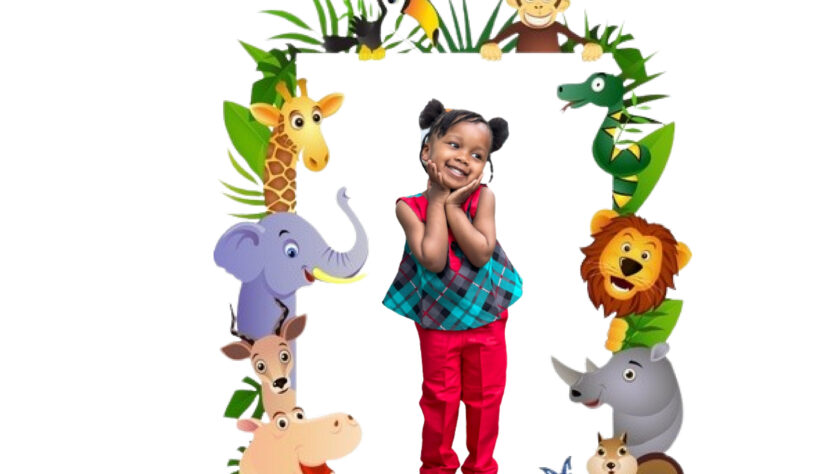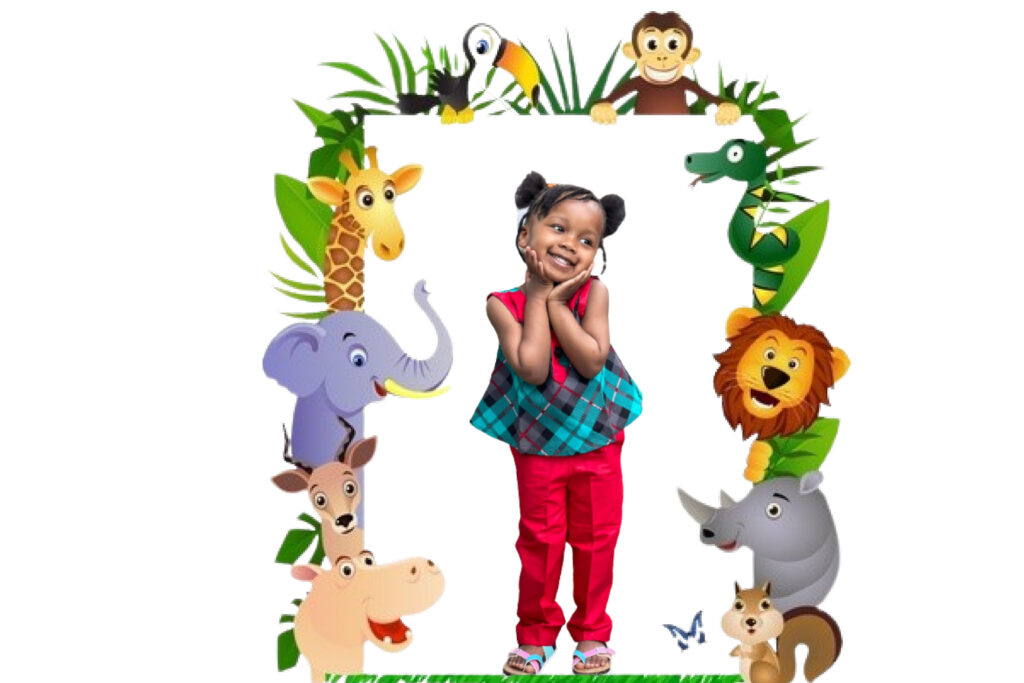
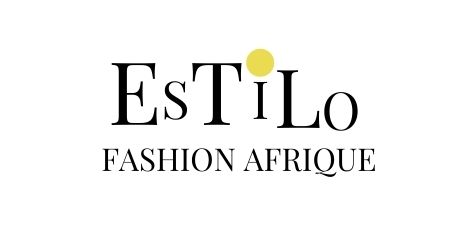
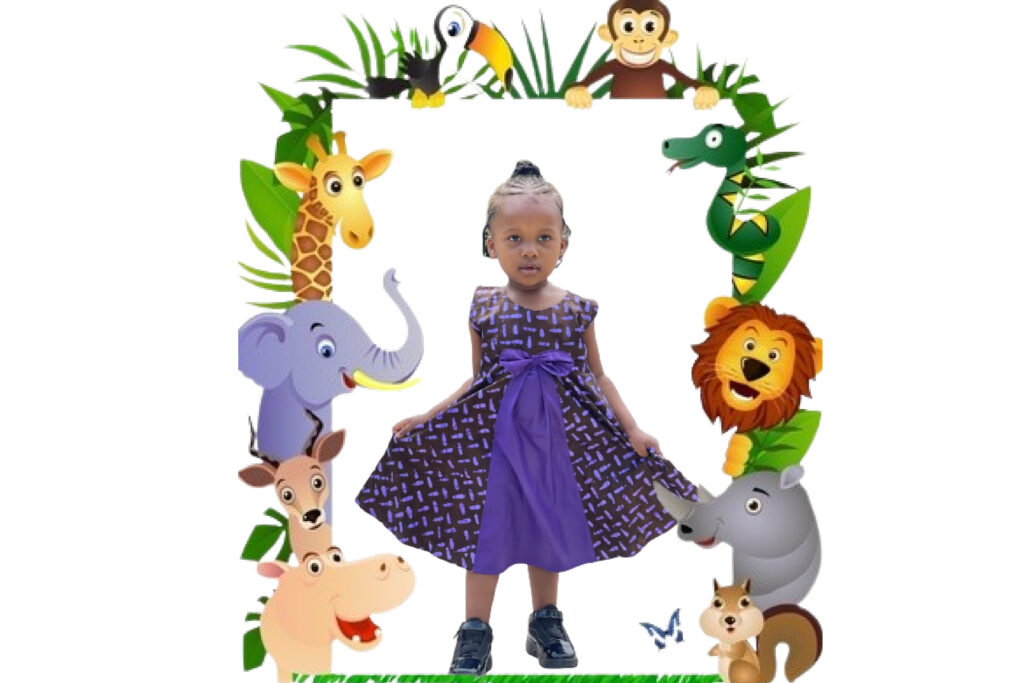
Tossoko Clothing Afro Kids Wear!
Por Redação Le Afrique
O estilo fashion infantil é uma das áreas mais singelas e desafiantes dentro da indústria da moda. Chegamos até a marca Tossoko Clothing Afro Kids Wear, que é uma referência dentro da moda internacional infantil africana. Com bases em raízes ancestrais africana, esta marca traz no seu estilo traços de resgate da cultura do Senegal. Apesar desta empresa está sediada no Canadá em Toronto, ela é a primeira marca de roupas infantis africana no país. A marca traz uma identidade de registro e valorização da cultura africana, até no seu nome.
Tossoko em Fulani ou Pular (uma língua falada na África Ocidental) significa pequeno.
A marca nasceu dentro de uma necessidade de trazer mais cor, nas criações de moda infantil vista na América do norte. E ao mesmo tempo de trazer através da moda infantil, a cultura africana que às vezes se perdem diante de outros valores estabelecidos dentro da indústria de moda internacional. Criada por uma mãe de dois filhos de origem africana. A marca tem o intuito de mostrar toda a beleza da cultura africana através da moda.
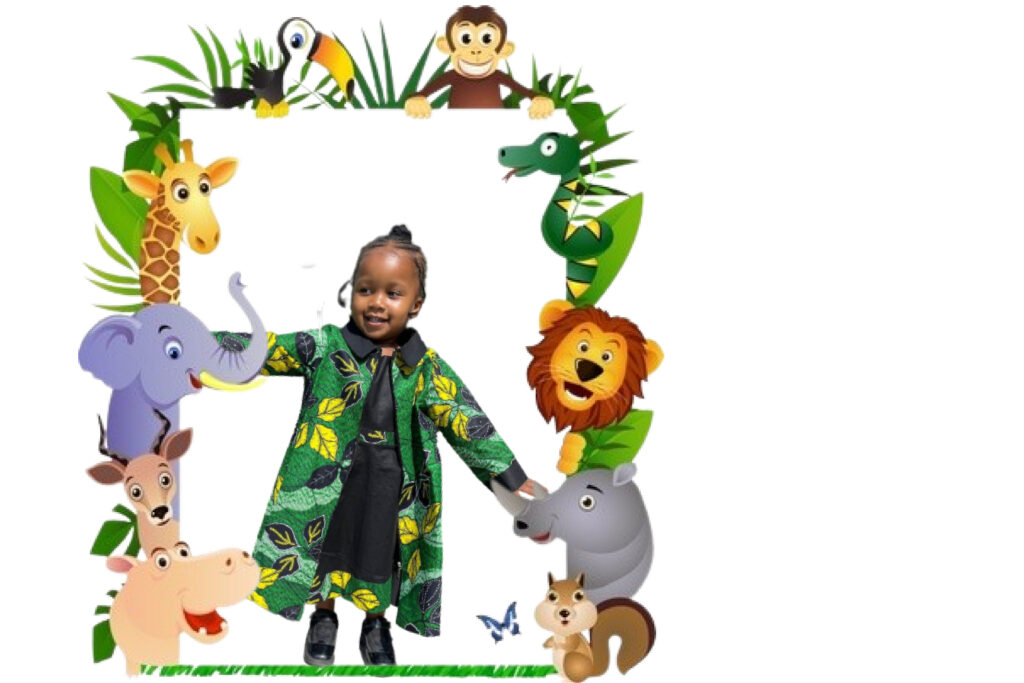
Criação sustentável
As roupas são feitas à mão, ecológicas e sustentáveis para crianças do tamanho 0-14.
Tossoko Clothing capacita mulheres e artesãs africanas. Tendo a visão de adicionar cores e identidade aos guarda-roupas infantis que mostram a vivacidade e o espírito de sua juventude. As roupas também visam capacitar as mulheres e artesãs africanas a explorar, criar e imaginar.
Com itens que são feitos à mão por artesãos africanos principalmente as mulheres. As coleções são com tecidos locais do Senegal, Guiné, Mali, Burkina Faso e muito mais. Mais de 80% das roupas são feitas de algodão e tecidos ecologicamente corretos, que são confortáveis para as crianças. Uma filosofia de trabalho e pensamento sobre como preservar o planeta.
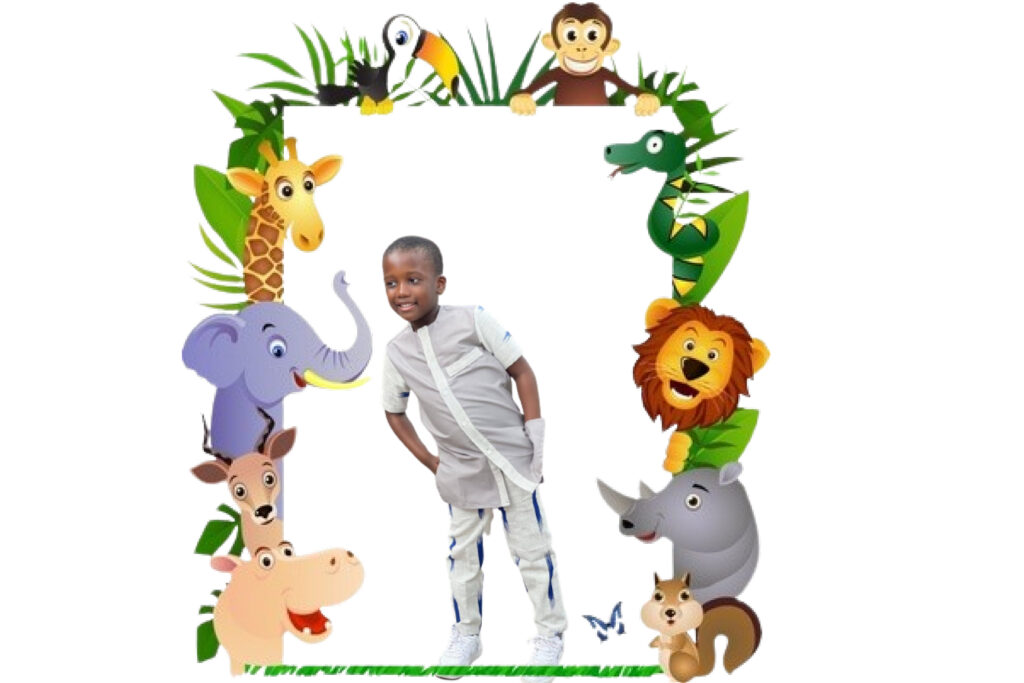
Aventura Fashion Kids
Fazer esta seção de fotos foi uma grande aventura enfrentada pela Mamy proprietária e dona da marca infantil. Uma aventura de muitas alegrias e momentos de grandes descobertas. Entre um intervalo e outro na produção das fotos para a matéria, fizemos esta entrevista exclusiva para a Magazine Le Afrique Style Brazil.
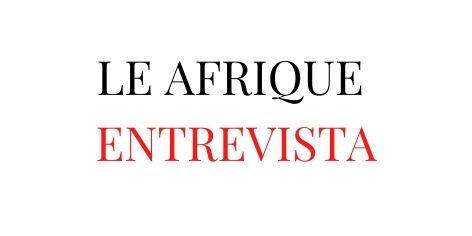
LAS – Quando foi que você começou a pensar na criação da moda infantil com referências africana?
MM- Aconteceu durante a licença maternidade do meu segundo filho. Tive que renovar meu guarda-roupa por causa do meu peso e queria me sentir confortável e estilosa. Resolvi fazer saias e vestidos africanos de casa para mim. Foi quando descobri tantos tecidos únicos de diferentes países da África. Fiz algumas roupas para mim com minha máquina de costura e fiz algumas calças para o meu menino. Ele não estava interessado em usá-los dizendo que não estava se sentindo confortável e se achou estranho com as cores e padrões. Muitas crianças nascidas e criadas no Canadá ou longe de sua origem estão reagindo da mesma maneira e, é uma questão que precisa ser abordada. Como? Ao torná-los mais acostumados a usar a Moda Africana em sua vida cotidiana, mas não apenas aleatoriamente durante as celebrações tradicionais uma ou duas vezes por ano.
LAS – Você sempre imaginou trabalhar com moda?
MM- Sim, foi minha paixão desde criança;
-crescendo vendo minha mãe costurar vestidos fofos para nós com sua máquina de costura,
-pegar retalhos de tecidos de alfaiates para fazer roupas para minhas bonecas,
– Eu aprendi costurar à mão na escola primária e na 7ª- 8ª série,
– Aprendi a fazer crochê com minha mãe,
– Eu estava desenhando em meus cadernos e vestidos de livros enquanto ouvia as aulas dos professores em sala de aula,
Eu amo moda e tecidos por tanto tempo.
LAS- O fato de você ser mãe te ajuda na concepção e criação das roupas infantis?
MM- Sim, porque você fica sabendo o que eles gostam e não gostam, o que os deixa mais confortáveis etc. Eu pergunto ao meu menino suas cores favoritas, os estilos que ele gosta etc.
LAS – Você é pioneira no Canadá em relação a ter a primeira loja de moda infantil africana. Como foi esta implantação no mercado de moda internacional?
MM- Internacionalmente o mercado de lojas de moda Infantil também está crescendo. É só que ainda, existem alguns que se especializaram em modelos únicos. Muitas lojas têm uma pequena seção destinada às crianças e, é por isso que há uma lacuna.
LAS – Qual é a identidade da marca infantil?
MM- O uso de diferentes tecidos africanos não só a estampa africana como também o design de roupas muito fofas unindo estilos tradicionais e modernos.
LAS – Quais são as referências que você incorpora neste estilo infantil que já fizeram parte da sua infância?
MM – As cores, minhas cores favoritas quando criança como rosa, amarelo, roxo, laranja…
– A fofura dos vestidinhos com babados por exemplo, minha mãe fazia para mim e minhas irmãs.
Os estilos e cores das minhas coleções são com certeza inspirados na minha experiência de infância e nas lembranças.
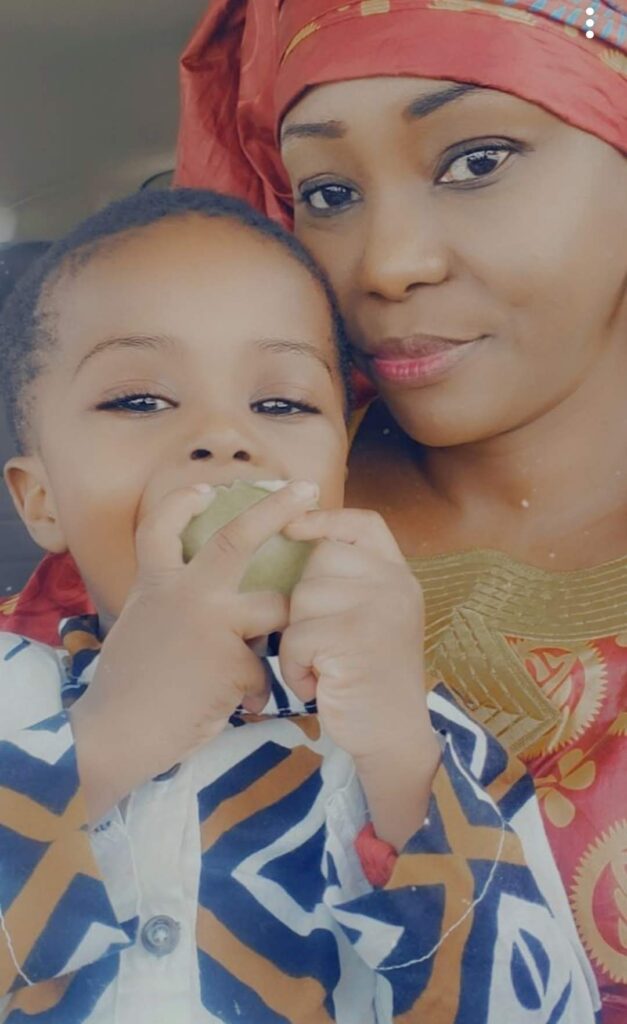
LAS – Existe algum conceito ancestral dentro das suas criações?
MM- Procuro fazer uma mistura entre estilos tradicionais e modernos. Como uma árvore “bem enraizada para crescer mais forte” Nós, por exemplo, trazemos de volta o porta-bebês africano que é a maneira de segurar seu bebê com segurança nas costas e não na frente como o modo ocidental.
LAS – Você vem de uma linhagem ancestral onde as mulheres fazem parte da realeza. Isso é um sentimento forte dentro de você? Você pode dizer mais algo sobre?
MM – Lembro-me de quando era pequena ser provocada pelos meus colegas porque o meu nome não era um nome comum. Em wolof significa plantar semente, cultivar, e o sufixo Mbott significa sapo. Mas a minha mãe explicou-me que eu era uma princesa (tirei o nome da minha avó) e meu antepassado era uma grande e bela rainha com um caráter forte que governava o Reino Walo na frente dos homens. Comecei a responder aos meus colegas e a contar-lhes a história. Aprendemos mais tarde na aula de História e fiquei cada vez mais orgulhosa. Em nossa cultura acreditamos que quando você pega o nome de alguém, você pega ao mesmo tempo 7 caracteres. Desde muito cedo as pessoas me censuravam por ter um caráter forte, não sorrir tanto, e tentar ser líder o tempo todo. Mesmo que você não confie nisso, isso afeta sua personalidade. Eu costumava ser a melhor ou uma das melhores quando eu era estudante até a universidade (fiquei presa no 3º ano de medicina não sabia porque), não estou esperando que os homens façam um trabalho que precisa ser feito por fortes músculos, eu sempre tomarei a iniciativa. Sempre fui assim desde criança jogando futebol com meus irmãos fazendo coisas de menino subindo em árvores para pegar manga… risos…
Gosto de liderar, inovar, tentar, por isso criei a Tossoko Clothing.
LAS – Estar trabalhando com moda é um sinal claro sobre este aspecto que você herdou dos seus antepassados?
MM – A realeza é conhecida por seus trajes grandes e elegantes com muitas joias com uma certa maneira de usá-los e andar devagar, com orgulho e elegância. Trabalhar na moda é de alguma forma uma maneira de mostrar a beleza e o estilo da moda senegalesa e trazer de volta a versão antiga das roupas majestosas da realeza em roupas infantis.
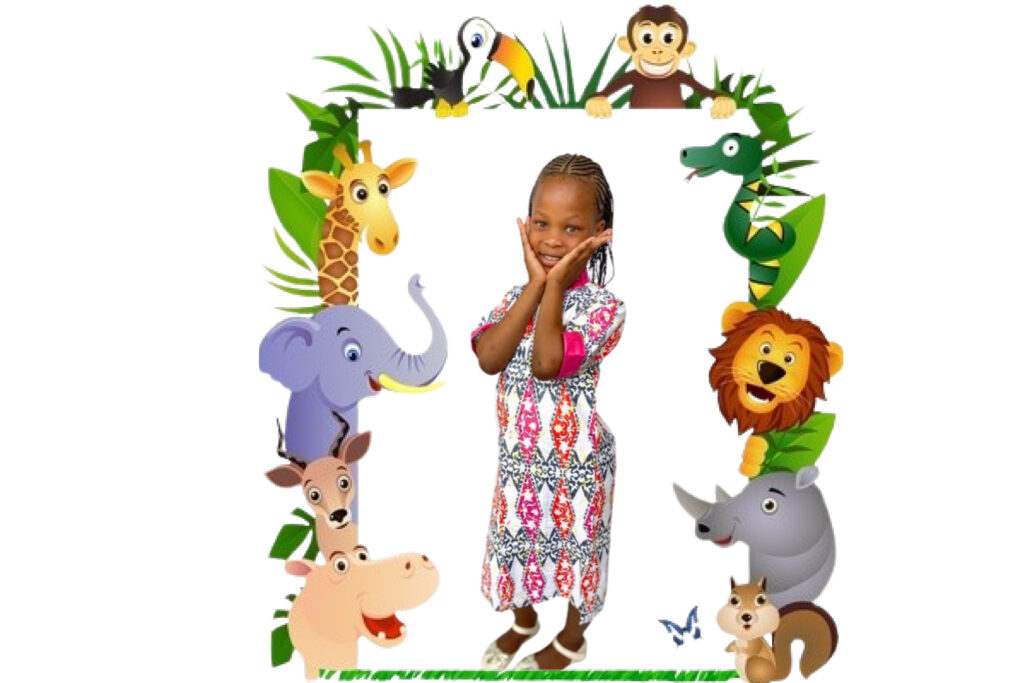
LAS – Como você define atualmente a moda infantil na Europa?
MM – Cores chatas, estilos padronizados sem futuro.
LAS – O que você mudaria neste aspecto?
MM – Deixaria mais criativo, mais colorido, com muitos símbolos, padrões e significados. Peças únicas desenhadas para Príncipes e Princesas. O vestir africano, é a nova tendência e até a moda ocidental começa a copiar.
LAS – Você é uma mulher forte que não teme as mudanças da vida. Sair da África para morar em outro país foi uma decisão difícil ou você sempre foi em busca de novas inspirações?
MM- Sim, foi uma decisão difícil, nunca pensei nisso antes. Eu estava confortável no Senegal um país quente e agradável com meus pais e meus outros irmãos etc. Mas eu tenho que me unir ao meu marido no Canadá, depois de me casar. Mas não me arrependi até agora. Me permitir me conhecer e valorizar mais a beleza e os grandes recursos que temos na África.
LAS – Novas inspirações, culturas diferentes, embora longe da sua cultura. Mais que você soube driblar e vencer. O que fez você voltar os olhos para se tornar uma empresária?
MM – A necessidade de ser mais flexível para cuidar dos meus filhos, do meu marido. Além disso, eu sou aquele tipo de pessoa que não quer dar ordens (A coisa da realeza). Eu quero ser meu próprio patrão. Essa liberdade, essa necessidade de explorar o empreendedorismo e desenvolver uma empresa como um desafio e torná-la bem-sucedida.
LAS – Como funciona a moda infantil no Canadá?
MM – Ainda temos grandes lojas que estão liderando o mercado GAP, Children’s Plac, Joe Fresh H&M etc. A African Children Fashion vem muito atrás, mas está crescendo dia a dia. Não é mais para festas ou ocasiões tradicionais, mas para uso diário.
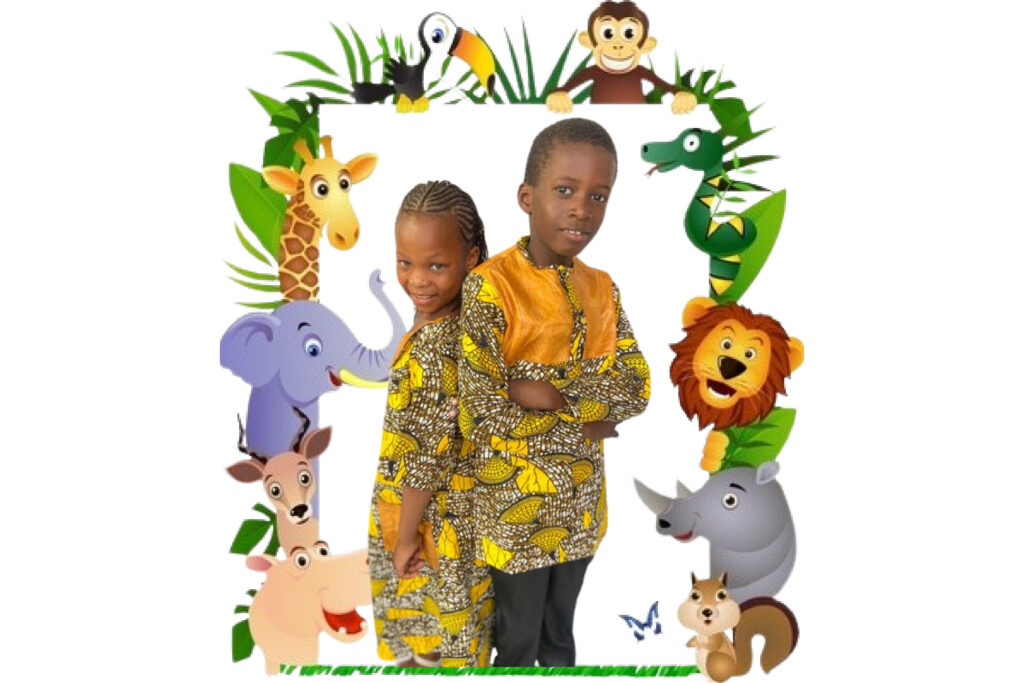
LAS – Quais são as próximas propostas que você pretende colocar no mercado infantil africano?
MM – Quero focar mais na seção de bebê, há tantos produtos para desenvolver em roupas e acessórios de bebê. Entre babetes, vestidos, cobertores jogando tapetes, macacões, sacos de dormir etc. São muito e tão fofos.
LAS – Existe ainda um sonho não realizado neste sentido. De mostrar mais esta moda infantil africana, dentro da indústria de moda internacional?
MM – Sim, realmente precisamos fazer mais para ser mais organizados e com certeza aumentar a produção da África construindo grandes fábricas que contratam e treinam mais pessoas para fazer produtos de ótima qualidade para colocar no mercado.
LAS – Existe alguma dificuldade nesta nova adaptação da moda africana no Canadá?
MM – Mesmo alguns africanos não estavam realmente cientes do que pode ser a Moda Africana, a beleza e a singularidade. É uma nova tendência que é bem adotada por todos. No entanto, às vezes você pode encontrar clientes dizendo “eu não preciso de tantas cores ou não desse brilho” é por isso que precisamos misturá-lo com cores lisas ousadas para diluir o copo de vinho lol, durante essa fase de transição, mas em geral a moda africana é bem adotada – é a nova tendência, sem dúvida, e temos que ir mais longe.
LAS – Como é feita o lançamento das coleções infantis?
MM – Até agora começamos no ano passado, e fizemos algumas coleções com base no tipo de tecido usado, ou uma cor específica que combina com a estação, por exemplo, a Coleção Faso Dan Fani com o tecido feito à mão de Burkina para mostrar a beleza deste tecido artesanal. A Coleção Sunshine and flowers em Pink e Yellow (eu amo essas 2 cores) bem clarinha em Bazin (tecido adorado pelos africanos) misturado com estampa africana desenhada para o verão. Então basicamente é uma escolha feita por temporada Outono/Inverno Primavera/Verão fizemos uma escolha de cores e os desenhos depois. Trabalho com minhas irmãs em casa e uma amiga de infância (ela costura para mim também) após consulta decidimos qual será a produção.
LAS – Você além de trabalhar com moda infantil, trabalha com decoração inspirada na África. Me fale mais um pouco sobre este mercado de decoração?
MM – Quando iniciei o meu negócio o meu mentor mencionou não me apegar apenas à moda infantil, porque há mais oportunidades para adultos, decoração africana etc. Ser endereçado, eu queria uma loja dedicada às crianças. Mas meus clientes começaram a me perguntar você faz isso? você faz aquilo? preciso de almofadas, preciso de roupa de cama… Percebo que si o ambiente das crianças também, precisa ser atualizado e a decoração da casa é uma parte importante que precisa ser mudada para a decoração estilo africano.
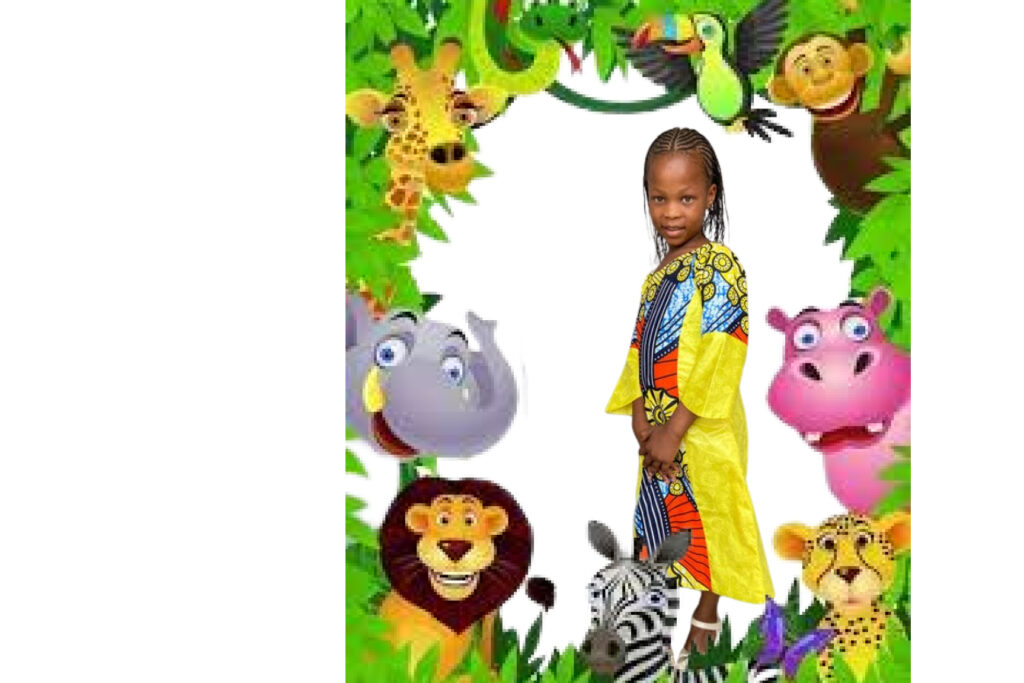
LAS – Você pretende ampliar mais este nicho no mercado no Canadá?
MM – Definitivamente, a singularidade e a beleza das cores e padrões embelezam os quartos. Então esse é um bom nicho que precisa ser expandido. Africano, preto ou não como a decoração africana É muito mais interessante que a moda infantil. As cores podem melhorar o seu humor, além disso, precisamos no Canadá principalmente quando todos se sentem tristes durante o inverno.
LAS – Qual a imagem que você quer passar para o mercado de moda infantil?
MM – É um grande mercado, ainda não saturado em relação ao mercado de moda adulta e há muito o que fazer.
LAS – E o que você imagina para o futuro da sua marca infantil no mercado internacional?
MM- Tecidos de qualidade, padrões e designs únicos, variedade de estilos, cada vez mais com criatividade.
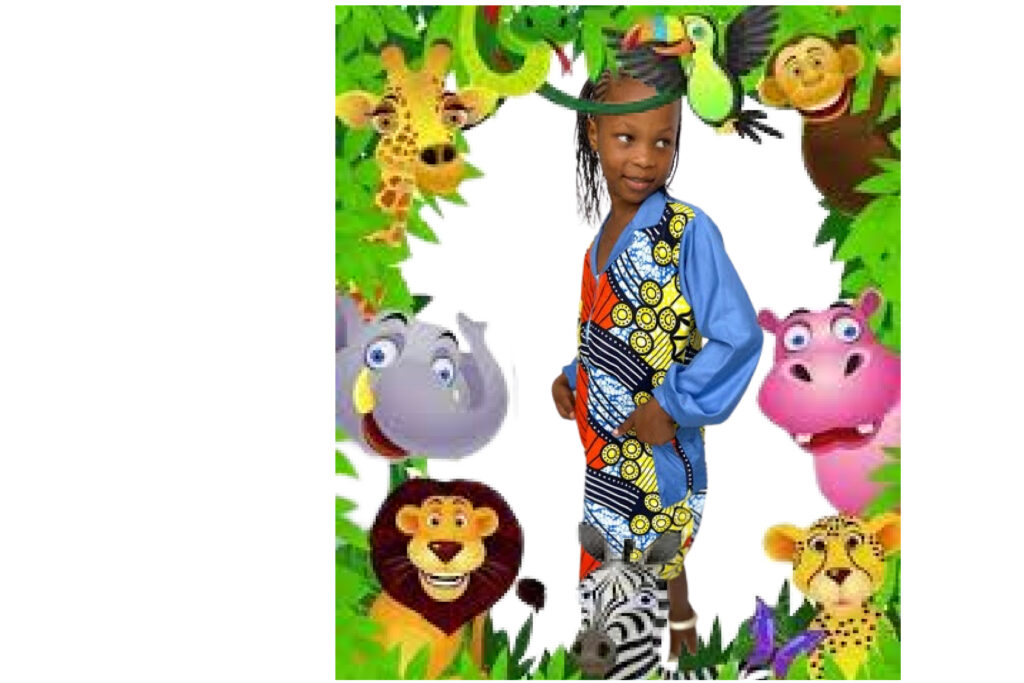
LAS – Eu e toda a equipe da Magazine Le Afrique Style Brazil agradece imensamente por você nos conceder esta entrevista exclusiva. Muito obrigado! O espaço é seu para agradecer e dizer o que quiser para os nossos leitores do Brasil.
MM – Agradeço muito a oportunidade oferecida de falar sobre a minha empresa. Acredito que a Mãe África é para todos os negros onde quer que estejam. Precisamos nos unir e capacitar uns aos outros.
Temos grandes recursos na África, devemos desenvolver o MADE IN AFRICA. É agora, é a hora!
Obrigado Eliana Oliveira pelo seu tempo, sua paciência, sua grande iniciativa.
Obrigado à toda equipe da Magazine Le Afrique Style Brazil.
Onde Encontrar:
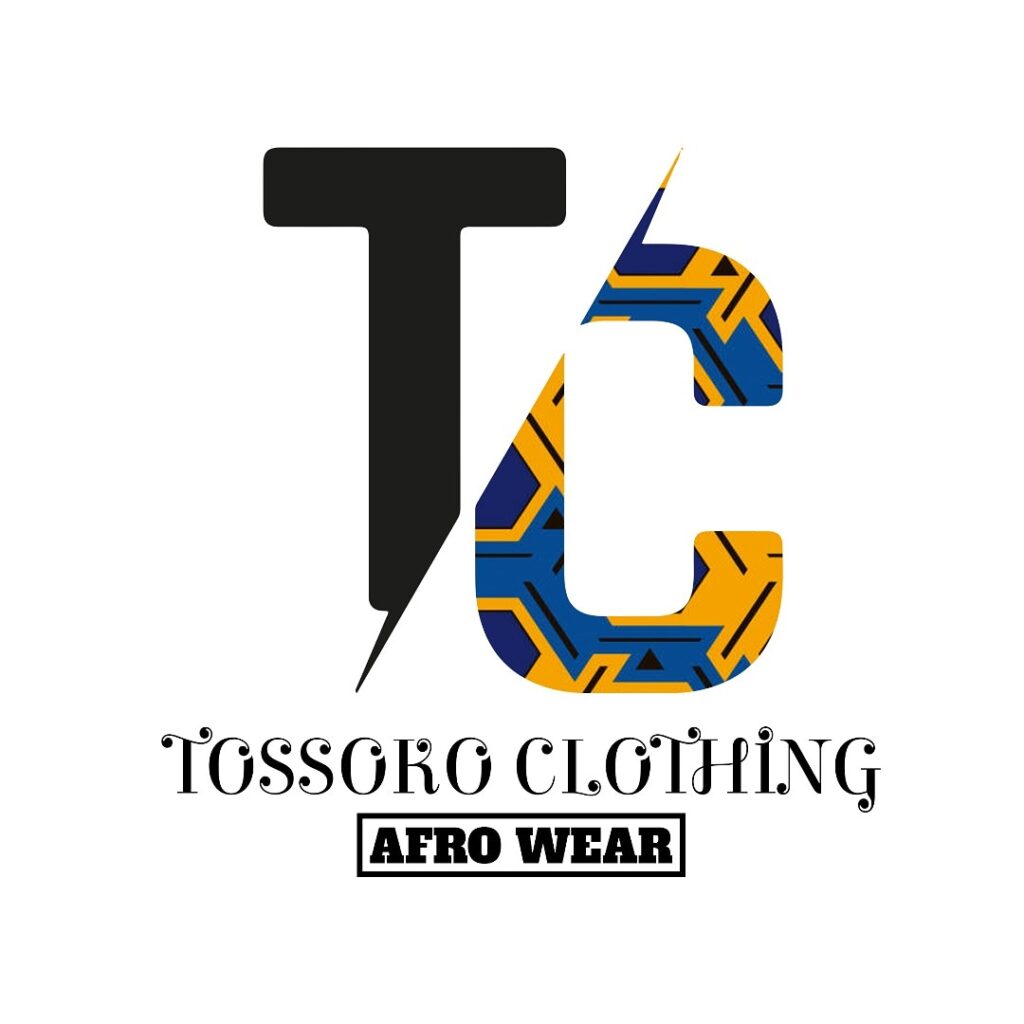
#africafashionkids #africafashion #fashionkids #afrowear #canada #fashion #senegal #senegalnews #canadanews #canadafashion #canadakids #senegalkids #fashionkidssenegal #tossokoclothingafrowear #magazineleafriquestylebrazil #modainfantilafricana #modaafroinfantil #africanos #decoracaoafricana #modainfantil #africanobrasil #mulheresafricanas #mulheresafro #mulheresafricanasdenegocios
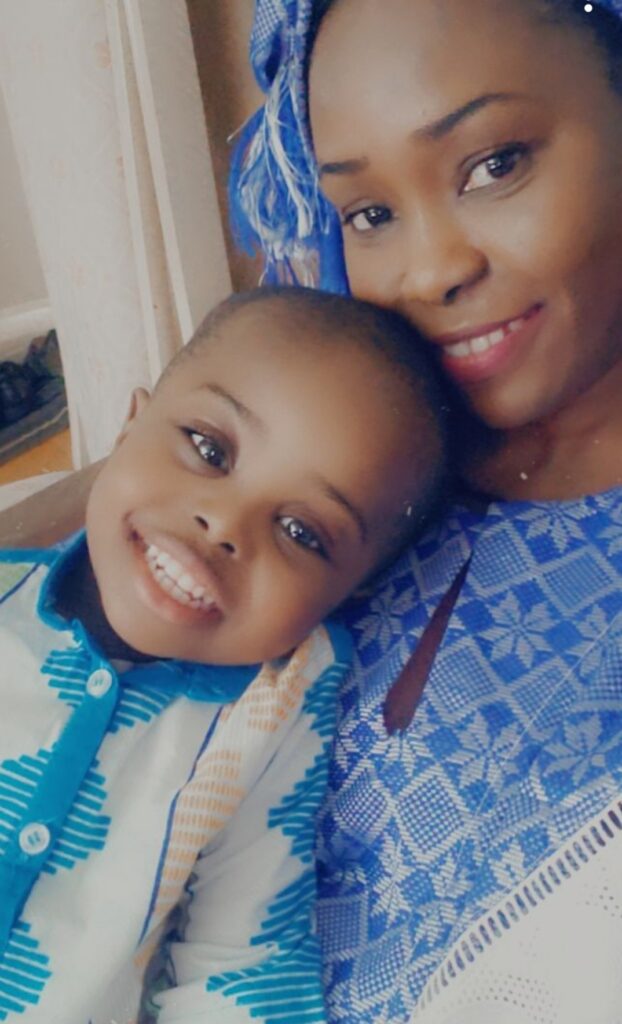
FASHION STYLE
Tossoko Clothing Afro Kids Wear!
By Editorial Le Afrique
Children’s fashion style is one of the most simple and challenging areas within the fashion industry. We arrived at the Tossoko Clothing Afro Kids Wear brand, which is a reference within international African children’s fashion. Based on ancestral African roots, this brand brings in its style traces of rescuing the culture of Senegal. Although this company is based in Canada in Toronto, it is the first African children’s clothing brand in the country. The brand brings an identity of registration and appreciation of African culture, even in its name.
Tossoko in Fulani or Pular (a language spoken in West Africa) means small.
The brand was born out of a need to bring more color to the children’s fashion creations seen in North America. And at the same time to bring through children’s fashion, the African culture that sometimes gets lost in the face of other values established within the international fashion industry. Raised by a mother of two children of African origin. The brand aims to show all the beauty of African culture through fashion.
sustainable creation
The clothes are handmade, eco-friendly and sustainable for children from size 0-14.
Tossoko Clothing empowers African women and artisans. Having the vision to add color and identity to children’s wardrobes that show the vivacity and spirit of their youth. The clothes also aim to empower African women and artisans to explore, create and imagine.
With items that are handmade by African artisans mainly women. The collections feature local fabrics from Senegal, Guinea, Mali, Burkina Faso and more. More than 80% of the clothes are made from cotton and eco-friendly fabrics, which are comfortable for children. A philosophy of work and thinking about how to preserve the planet.
Adventure Fashion Kids
Making this photo shoot was a great adventure faced by Mamy, owner and owner of the children’s brand. An adventure of many joys and moments of great discoveries. Between breaks in the production of photos for the article, we did this exclusive interview for Magazine Le Afrique Style Brazil.
LAS – When did you start thinking about creating children’s fashion with African references?
MM- It happened during my second child’s maternity leave. I had to revamp my wardrobe because of my weight and I wanted to feel comfortable and stylish. I decided to make African skirts and dresses from home for myself. That’s when I discovered so many unique fabrics from different countries in Africa. I made some clothes for myself with my sewing machine and I made some pants for my boy. He wasn’t interested in wearing them saying he wasn’t feeling comfortable and he felt weird with the colors and patterns. Many children born and raised in Canada or far away from home are reacting in the same way and it is an issue that needs to be addressed. As? By making them more accustomed to wearing African Fashion in their everyday life, but not just randomly during traditional celebrations once or twice a year.
LAS – Have you always imagined working with fashion?
MM- Yes, it was my passion since childhood;
-growing up watching my mom sew cute dresses for us with her sewing machine,
-get fabric scraps from tailors to make clothes for my dolls,
- I learned to sew by hand in primary school and 7th-8th grade,
- I learned to crochet with my mother,
- I was drawing in my notebooks and dressed as books while listening to the teachers’ classes in the classroom,
I’ve loved fashion and fabrics for so long.
LAS- Does the fact that you are a mother help you in the design and creation of children’s clothes?
MM- Yes, because you get to know what they like and don’t like, what makes them more comfortable, etc. I ask my boy his favorite colors, styles he likes etc.
LAS – You are a pioneer in Canada in terms of having the first African children’s fashion store. How was this implementation in the international fashion market?
MM- Internationally, the children’s fashion store market is also growing. It’s just that still, there are some who specialize in unique models. Many stores have a small section aimed at children, which is why there is a gap.
LAS – What is the identity of the children’s brand?
MM- The use of different African fabrics not only the African print but also the design of very cute clothes, combining traditional and modern styles.
LAS – What are the references that you incorporate in this children’s style that were already part of your childhood?
MM – The colors, my favorite colors as a child like pink, yellow, purple, orange…
- The cute little dresses with ruffles, for example, my mother made for me and my sisters.
The styles and colors of my collections are certainly inspired by my childhood experience and memories.
LAS – Is there any ancestral concept within your creations?
MM- I try to mix traditional and modern styles. Like a tree “well rooted to grow stronger” We, for example, bring back the African baby carrier which is the way to hold your baby securely in the back and not in the front like the western way.
LAS – You come from an ancestral lineage where women are part of royalty. Is that a strong feeling inside of you? Can you say something more about it?
MM – I remember when I was little being teased by my classmates because my name was not a common name. In Wolof it means to plant seed, to cultivate, and the suffix Mbott means toad. But my mother explained to me that I was a princess (I took my grandmother’s name) and my ancestor was a great and beautiful queen with a strong character who ruled the Walo Kingdom in front of men. I started responding to my colleagues and telling them the story. We learned later in history class and I became more and more proud. In our culture we believe that when you get someone’s name, you get 7 characters at the same time. From a very early age people reproached me for having a strong character, not smiling so much, and trying to be a leader all the time. Even if you don’t trust it, it affects your personality. I used to be the best or one of the best when I was a student all the way to university (I got stuck in 3rd year of medicine didn’t know why), I’m not expecting men to do a job that needs to be done by strong muscles, I’ll always take the initiative. I’ve always been like that since I was a kid playing soccer with my brothers doing boy stuff climbing trees to get mangoes… laughs…
I like to lead, innovate, try, that’s why I created Tossoko Clothing.
LAS – Is working in fashion a clear sign of this aspect that you inherited from your ancestors?
MM – Royals are known for their large and elegant outfits with lots of jewelry with a certain way of wearing them and walking slowly, with pride and elegance. Working in fashion is somehow a way to show the beauty and style of Senegalese fashion and bring back the old version of royal majestic clothes in children’s clothing.
LAS – How do you currently define children’s fashion in Europe?
MM – Boring colors, patterned styles with no future.
LAS – What would you change in this aspect?
MM – It would make it more creative, more colorful, with many symbols, patterns and meanings. Unique pieces designed for Princes and Princesses. African dress is the new trend and even western fashion is starting to copy it.
LAS – You are a strong woman who is not afraid of life’s changes. Was leaving Africa to live in another country a difficult decision or were you always looking for new inspirations?
MM- Yes, it was a difficult decision, I never thought about it before. I was comfortable in Senegal a warm and pleasant country with my parents and my other brothers etc. But I have to join my husband in Canada after I get married. But I haven’t regretted it so far. Allow me to know myself and appreciate more the beauty and the great resources that we have in Africa.
LAS – New inspirations, different cultures, although far from your culture. More than you knew how to dribble and win. What made you turn your eyes to becoming a businesswoman?
MM – The need to be more flexible to take care of my children, my husband. Also, I’m that kind of person who doesn’t want to give orders (The royal thing). I want to be my own boss. That freedom, that need to explore entrepreneurship and develop a company as a challenge and make it successful.
LAS – How does children’s fashion work in Canada?
MM – We still have big stores that are leading the market GAP, Children’s Plac, Joe Fresh H&M etc. African Children Fashion comes a long way back but is growing day by day. It is no longer for parties or traditional occasions, but for everyday use.
LAS – What are the next proposals that you intend to place in the African children’s market?
MM – I want to focus more on the baby section, there are so many products to develop in baby clothes and accessories. Among bibs, dresses, blankets throwing rugs, overalls, sleeping bags etc. They are very, very cute.
LAS – There is still an unfulfilled dream in this sense. To show more of this African children’s fashion, within the international fashion industry?
MM – Yes, we really need to do more to be more organized and certainly increase production in Africa by building large factories that hire and train more people to make great quality products to put on the market.
LAS – Are there any difficulties in this new adaptation of African fashion in Canada?
MM – Even some Africans were not really aware of what African Fashion can be, beauty and uniqueness. It is a new trend that is well adopted by everyone. However, sometimes you may find customers saying “I don’t need as many colors or not that shine” that’s why we need to mix it with bold plain colors to dilute the wine glass lol, during this transition phase, but in overall African fashion is well adopted – it’s the new trend, no doubt, and we have to go further.
LAS – How are children’s collections launched?
MM – So far we started last year, and we made some collections based on the type of fabric used, or a specific color that matches the season, for example, the Faso Dan Fani Collection with the handmade fabric from Burkina to show the beauty of this handmade fabric. The Sunshine and flowers Collection in Pink and Yellow (I love these 2 colors) very light in Bazin (a fabric loved by Africans) mixed with an African print designed for summer. So basically it’s a choice made by season Fall/Winter Spring/Summer we made a choice of colors and designs later. I work with my sisters at home and a childhood friend (she sews for me too) after consultation we decide what the production will be.
LAS – In addition to working with children’s fashion, you work with decoration inspired by Africa. Tell me a little more about this decoration market?
MM – When I started my business, my mentor mentioned that I don’t just get attached to children’s fashion, because there are more opportunities for adults, African decor, etc. To be addressed, I wanted a store dedicated to children. But my clients started asking me do you do that? do you do that? I need pillows, I need bedding… I realize that the children’s environment too, needs to be updated and the decoration of the house is an important part that needs to be changed to the African style decor.
LAS – Do you intend to expand this niche further in the Canadian market?
MM – Definitely, the uniqueness and beauty of the colors and patterns beautify the rooms. So this is a good niche that needs to be expanded. African, black or not like African decor It is much more interesting than children’s fashion. Colors can improve your mood, moreover, we need it in Canada especially when everyone feels sad during winter.
LAS – What image do you want to convey to the children’s fashion market?
MM – It’s a big market, not yet saturated in relation to the adult fashion market and there’s a lot to do.
LAS – And what do you envision for the future of your children’s brand in the international market?
MM- Quality fabrics, unique patterns and designs, variety of styles, increasingly with creativity.
LAS – Me and the entire team at Magazine Le Afrique Style Brazil thank you immensely for granting us this exclusive interview. Thank you very much! The space is yours to thank and say what you want to our readers in Brazil.
MM – I really appreciate the opportunity to talk about my company. I believe Mother Africa is for all black people wherever she wants them to be. We need to come together and empower each other.
We have great resources in Africa, we must develop MADE IN AFRICA. It’s now, it’s time!
Thank you Eliana Oliveira for your time, your patience, your great initiative.
Thanks to the entire team at Magazine Le Afrique Style Brazil.


